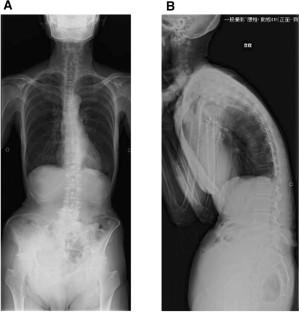European Spine Journal ( IF 2.6 ) Pub Date : 2022-09-03 , DOI: 10.1007/s00586-022-07367-9 Shunsuke Katsumi 1 , Akira Shinohara 1 , Takayoshi Kajiwara 1 , Mitsuru Saito 1

|
Purpose
Surgical site infection (SSI) is a serious complication after spine surgery. Recently, it has become possible to perform negative pressure wound therapy with instillation and dwell time (NPWTi-d) for postoperative infected wounds. We report the first rare case of symptomatic pneumoencephalopathy following NPWTi-d for methicillin-resistant Staphylococcus aureus (MRSA) infection after spinal deformity surgery.
Methods
Retrospective review of a patient’s medical record and imaging.
Results
A 77-year-old female patient underwent posterior corrective fixation with no intraoperative complications. On the 10th postoperative day, SSI was diagnosed, and debridement was performed. Since MRSA was detected in the wound culture, and a prolonged inflammatory reaction was observed, NPWTi-d was started to preserve the instrumentation. Gradually, good granulation was observed, and the extensive soft tissue defect decreased. On the 29th day after the start of NPWTi-d, the patient experienced sudden headache and neck pain while standing, and head computed tomography led to the diagnosis of symptomatic pneumoencephalopathy. NPWTi-d was discontinued, and when surgery was performed to close the wound, dural injury was found, which was not present at the time of the initial surgery, and dural repair was performed. After 2 weeks of bed rest, the patient’s pneumoencephalopathy improved. Three years have passed since the surgery, and no recurrence of cerebrospinal fluid leakage or infection has been observed.
Conclusions
Although NPWTi-d is a useful treatment for SSI, it is always necessary to pay attention to the development of pneumoencephalopathy and promptly diagnose and treat it because of the risk of life-threatening complications.
中文翻译:

脊柱畸形手术后耐甲氧西林金黄色葡萄球菌感染的负压伤口治疗与滴注和停留时间相关的张力性脑积气
目的
手术部位感染 (SSI) 是脊柱手术后的严重并发症。最近,可以对术后感染伤口进行负压伤口治疗,包括滴注和停留时间 (NPWTi-d)。我们报告了脊柱畸形手术后耐甲氧西林金黄色葡萄球菌 (MRSA) 感染后 NPWTi-d 后出现症状性肺性脑病的首例罕见病例。
方法
对患者的病历和影像进行回顾性审查。
结果
一名 77 岁的女性患者接受了后路矫正固定,没有出现术中并发症。术后第10天,诊断为SSI,并进行了清创术。由于在伤口培养物中检测到 MRSA,并且观察到长时间的炎症反应,因此开始使用 NPWTi-d 来保存仪器。逐渐观察到良好的肉芽形成,广泛的软组织缺损减少。在 NPWTi-d 开始后的第 29 天,患者在站立时突然出现头痛和颈部疼痛,头部计算机断层扫描诊断为症状性气脑病。NPWTi-d 停用,当进行手术闭合伤口时,发现硬脑膜损伤,这在初始手术时并不存在,并进行了硬脑膜修复。经过两周的卧床休息,患者的肺气性脑病好转。手术三年过去了,脑脊液漏和感染没有复发。
结论
尽管 NPWTi-d 是一种有效的 SSI 治疗方法,但由于存在危及生命的并发症风险,始终需要注意气脑病的发展并及时诊断和治疗。










































 京公网安备 11010802027423号
京公网安备 11010802027423号